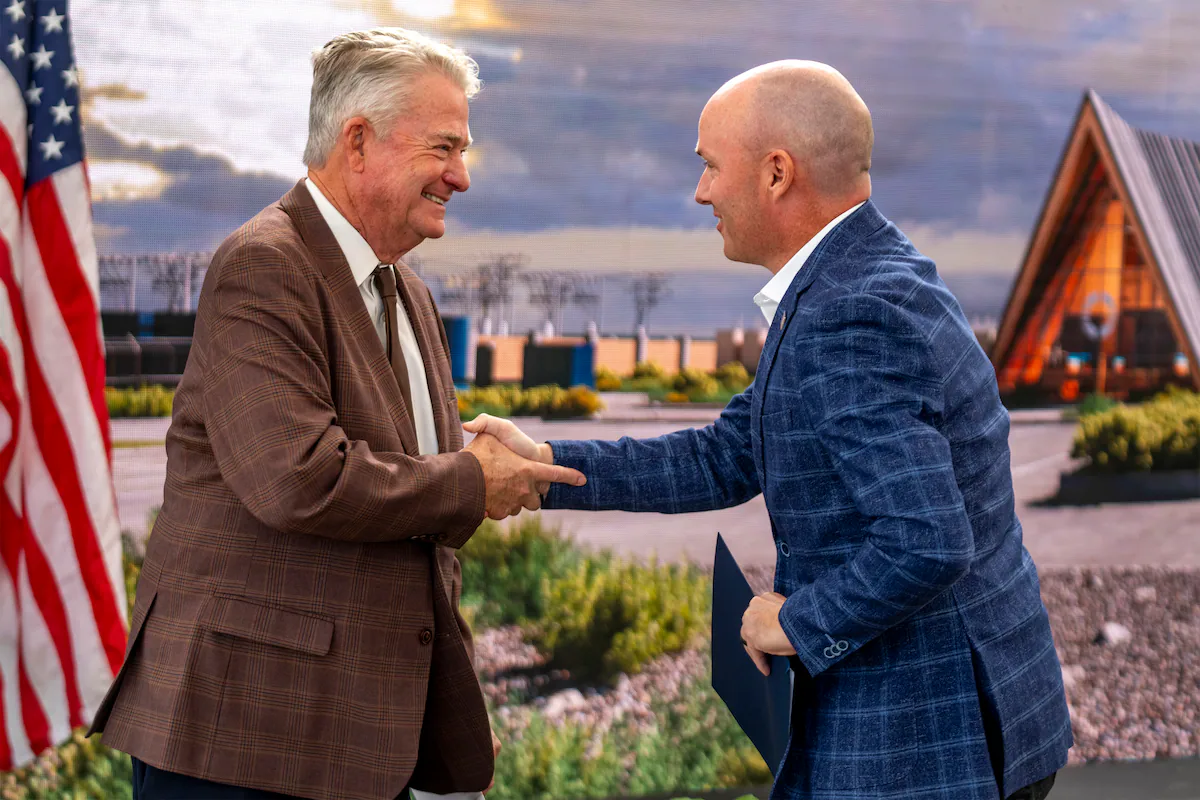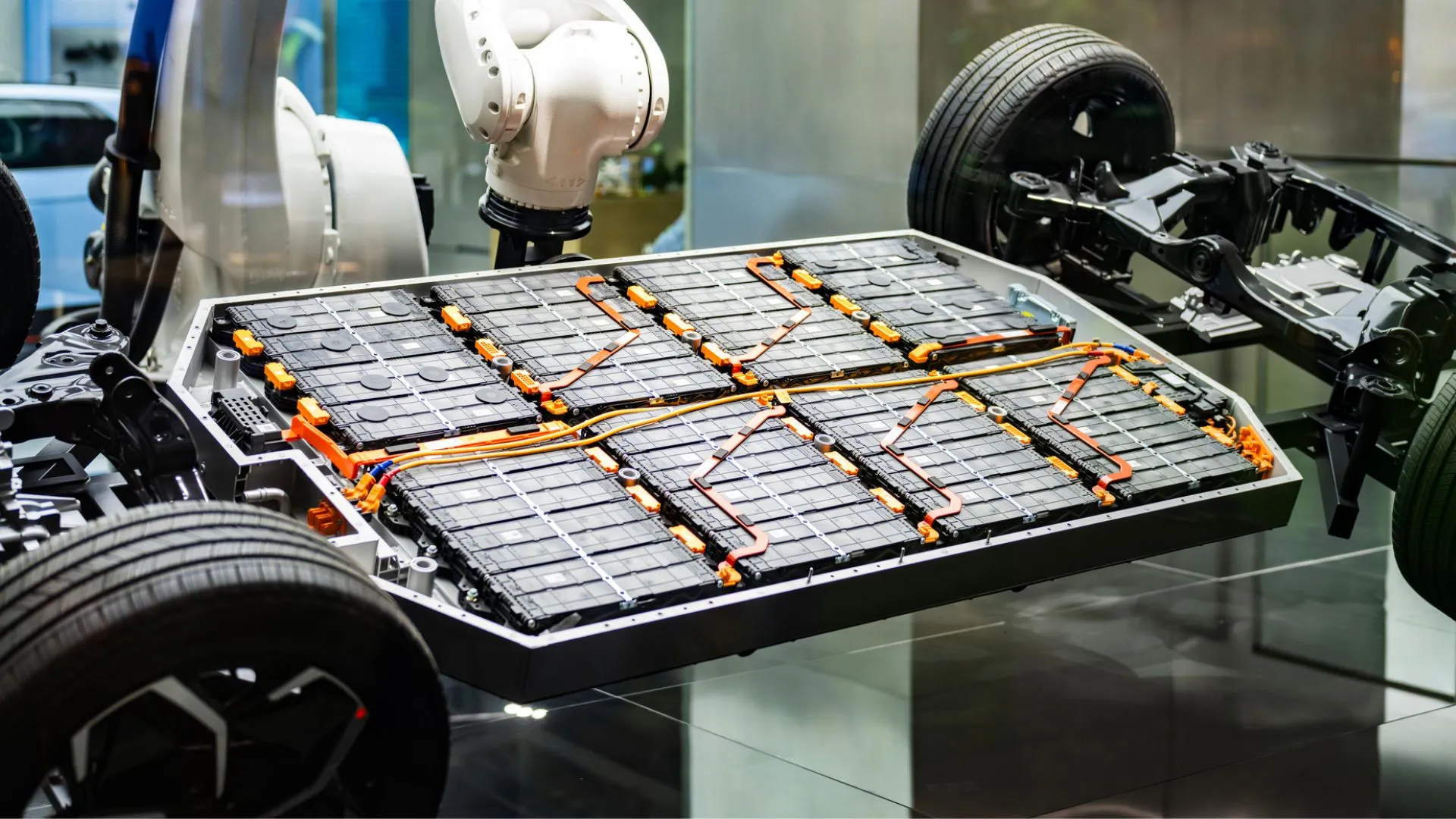
Idaho Falls • Gov. Spencer Cox has called his “Operation Gigawatt” an “all-of-the-above” energy strategy to bring more power to Utah’s grid.
But during a busy day of panels and groundbreaking ceremonies Monday, the governor was all about amping up nuclear generation.
“There is an reawakening happening in this country,” Cox said during an event promoting The Oklo Aurora Powerhouse, a privately run fast fission facility set to be built about 30 minutes west of Idaho Falls.
“If you truly care about the environment,” Cox continued, “you have to be pro nuclear. If you’re not, I can’t listen to you. That makes no sense to me.”
Oklo asserts it can deploy low-cost energy in under 18 months, and once online, it could become the first commercial sodium-cooled fast reactor in the nation.
It’s the kind of private sector nuclear facility Cox wants to see contributing to Utah’s own energy portfolio, and he’d like to see it as soon as possible.
“We’ve become, sadly over time, profoundly stupid as a country,” the governor said. “In some of the decisions we’ve made and the decisions we have not made, we forgot how to build in this country.”
Cox and some of his political counterparts pointed to a slow approval process on the federal level and bureaucratic red tape as factors sapping the life out of nuclear projects for more than half a century.
They praised President Donald Trump’s four executive orders signed in May, meant to fast track nuclear reactor licensing approvals and quadruple the nation’s nuclear energy output by 2050.
“We need more baseload power in this country,” said Environmental Protection Agency Administrator Lee Zeldin at the Oklo groundbreaking, “and we need more certainty for those who want to invest in this country, and the process should take less time.”
Later that afternoon, at a Western Governors’ Association workshop on “Energy Superabundance,” Cox also praised the Trump Administration’s speedy approval of the Velvet-Wood uranium mine in Utah. The process took an unprecedented 14 days.
“There is nothing magical about time,” Cox said at the WGA event, which was hosted by the Idaho National Laboratory. “Time does not make anything safer.”
The governor also noted growing bipartisan support and a surge in demand from artificial intelligence as motivators behind the coming nuclear “renaissance.”
For all the hype behind nuclear, however, Monday’s discussions made little mention of the water demands from new nuclear generation, or what will happen to all the inevitable radioactive waste.
Idaho Gov. Brad Little noted new “scalable, affordable” power plants could fuel energy-gobbling desalination plants at population centers on the West Coast, freeing up more resources for the interior.
“That’s just one of the benefits pending out there,” Little said, “as we go forward with all this investment.”
Regarding waste, Bradley Crowell with the U.S. Nuclear Regulatory Commission noted improved technology and recycling could become potential solutions.
The Oklo Aurora Powerhouse, for example, plans to use decades-old fuel recovered from Idaho’s Experimental Breeder Reactor II, or EBR-II, which the Department of Energy shuttered in 1994.
“There will still be something that has to go to a repository eventually” from the facility, said Mike Goff, a secretary with the DOE’s Office of Nuclear Energy, in an interview. “But it’ll be a lower volume.”
The discussions also made almost no mention of the role of solar and wind generation in the West’s future grid. Congress recently defunded incentives for those renewables with the Trump Administration’s support. Zeldin said federal funds issued for the projects were inefficiently spent.
Cox said that, instead of an “energy transition,” the national dialogue should be about “energy addition.”
“We can’t shut our coal plants down. We can’t shut our gas-fired plants down,” Cox said. “But we can eventually, if we get the rest of this right.”
Nuclear, the governor said, is the closest thing the country has to an energy “holy grail.”



